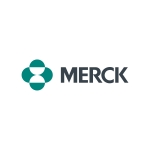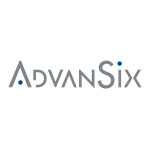- Interim analysis at 56 weeks from ECZTEND, an open-label extension trial, demonstrates sustainable and durable efficacy of tralokinumab in adult patients1
- Patients enrolled in ECZTRA 1 and 2 parent trials who continued into ECZTEND have now been treated with tralokinumab for two years1
- The overall safety profile of tralokinumab was consistent with that observed in the parent trials1
BALLERUP, Denmark, & MADISON, N.J. — (BUSINESS WIRE) — LEO Pharma A/S, a global leader in medical dermatology, today announced results on the long-term safety and efficacy profile of tralokinumab in adult patients with moderate-to-severe atopic dermatitis. Results were shared as an oral presentation during the American Academy of Dermatology Virtual Meeting Experience (AAD VMX) 2021.
Tralokinumab is a high affinity, human monoclonal antibody that specifically binds to and inhibits the IL-13 cytokine, a key driver of atopic dermatitis signs and symptoms.2,3 It is an investigational therapy in clinical development, and its safety and efficacy are currently being evaluated by regulatory authorities.
The interim analysis at 56 weeks in the ECZTEND trial (NCT03587805) showed tralokinumab 300 mg every other week plus optional topical corticosteroids (TCS) demonstrated long-term improvements in itch, sleep, and in atopic dermatitis signs and symptoms.1 Patients who had enrolled in pivotal Phase 3 trials ECZTRA 1 and 2 who continued into ECZTEND were on treatment for at least two years.1
“Atopic dermatitis is a complex, chronic skin disease that can have devastating and lasting impacts due to the unpredictable nature of the disease. Since patients can live with atopic dermatitis for decades, clinicians are looking for new treatment options that provide predictable long-term results,” said Andrew Blauvelt, MD, MBA, President of Oregon Medical Research Center in Portland, Oregon, and lead investigator for ECZTEND. “We are encouraged by the sustained improvements seen over time in patients treated with tralokinumab in the ECZTEND trial, showing great potential for a promising new treatment option for adults living with uncontrolled moderate-to-severe atopic dermatitis.”
The ongoing 268-week open-label extension trial is investigating the long-term safety and efficacy of tralokinumab 300 mg every other week in patients who previously participated in parent trials ECZTRA 1-8 and TraSki investigator-initiated study.1 The primary endpoint was defined as the number of adverse events during the treatment period from baseline up to Week 268.1
Interim analysis at Week 56 included patients from parent trials ECZTRA 1, 2, ECZTRA 3 and ECZTRA 5. Interim efficacy results at Week 56 were based on the Investigator Global Assessment score of clear or almost clear skin (IGA 0/1) and at least a 75% improvement in the Eczema Area and Severity Index score (EASI-75).1
|
|
IGA 0/1 (% of patients [n/N]) |
EASI Score (Median)
|
EASI % Change From Parent Trial Baseline (Median) |
EASI-50 (% of patient [n/N]) |
EASI-75 (% of patients [n/N]) |
EASI-90 (% of patient [n/N]) |
EASI ≤7 (% of patients [n/N]) |
Pruritus NRS Worst Weekly Score (Mean [SD]) |
Eczema- related Weekly Sleep NRS Score (Mean [SD]) |
|
Week 56 |
49.7 (255/513) |
1.8 |
-93.6 |
95.1 (488/513) |
82.8 (425/513) |
61.0 (313/513) |
79.7 (409/513) |
3.3 (2.6) |
2.0 (2.4) |
Participants included 1,174 patients from ECZTEND at data cut-off.1 Observed outcomes for all patients enrolled 60 weeks prior to data cut-off (n=513) were analyzed at Week 56.1 At parent-trial baseline, ECZTEND baseline, and Week 56, median EASI score was 26.6, 4.7, and 1.8, respectively.1 At Week 56, IGA and EASI response rates were 49.7% (IGA 0/1), 95.1% (EASI-50), 82.8% (EASI-75), 61.0% (EASI-90), and 79.7% (EASI ≤7). An EASI score of ≤7 corresponds to mild atopic dermatitis.1
At the same 56-week data cut-off, measurements of itch and sleep disruptions due to itch were also reported.1 At Week 56, the mean worst weekly pruritus (i.e. itch) numeric rating scale (NRS) score was 3.3 (parent-trial baseline was 7.7) while the mean eczema-related weekly sleep NRS score was 2.0 (parent-trial baseline was 6.9).1
In the two-year cohort of patients who completed 52 weeks of tralokinumab treatment in parent studies (ECZTRA 1 and 2) and at least 56 weeks in ECZTEND (n=291), observed EASI response rates were 93.8% (EASI-50), 82.5% (EASI-75), and 59.8% (EASI-90), demonstrating sustained efficacy after two years of treatment.1 The efficacy and response rates demonstrated by this two-year cohort were consistent with that of the overall group at data cut-off (56 weeks).1These results indicate patients receiving long-term treatment with tralokinumab sustained the response rates and improvements in itch and sleep achieved in the parent trials.1
The long-term safety of tralokinumab treatment were also assessed.4 By the data cut-off, 11.8% of patients had withdrawn from the study, and discontinuation rates due to an adverse event were low (1.6%).4
In the safety analysis set (n=1,174), from the start of the ECZTEND trial to data cut-off, 71.9% of patients experienced an adverse event; most were mild or moderate in severity.4 The most frequently reported adverse events (≥5% of patients receiving tralokinumab) included viral upper respiratory tract infection (mainly reported as common cold; 21.3%), atopic dermatitis (13.5%), and upper respiratory tract infection (7.1%). Conjunctivitis was reported in 5.9% of patients.4
“Atopic dermatitis is a condition that can impact patients over decades, which is why we are very encouraged by these long-term study results that show the potential of tralokinumab over time,” said Jörg Möller, Executive Vice President, Global Research and Development, LEO Pharma. “Tralokinumab is currently being evaluated by health authorities around the world, and we hope to introduce this targeted treatment option soon.”
LEO Pharma recently received a positive opinion for tralokinumab from the Committee for Medicinal Products for Human Use (CHMP) of the European Medicines Agency on April 23, 2021.
Additional data will be presented by LEO Pharma at AAD VMX, including a sub-analysis of the pivotal Phase 3 trial, ECZTRA 1, that showed the impact of tralokinumab on skin barrier abnormalities.
About tralokinumab
Tralokinumab is a human, monoclonal antibody developed to specifically neutralize the IL-13 cytokine, which plays a key role in the immune process underlying atopic dermatitis signs and symptoms. Tralokinumab specifically binds to the IL-13 cytokine with high affinity, thereby inhibiting interaction with the IL-13 receptor α1 and α2 subunits (IL-13Rα1 and IL-13Rα2).2,3
About the ECZTEND – Long-Term Extension (LTE) Trial
ECZTEND is a Phase 3, long-term (up to 268 weeks), open-label, single-arm, extension trial to evaluate the safety and efficacy of tralokinumab in patients with atopic dermatitis who participated in the previous tralokinumab monotherapy trials (ECZTRA 1 and ECZTRA 2), the combination therapy tralokinumab plus TCS trial (ECZTRA 3), the Drug-drug interaction (DDI) trial (ECZTRA 4), the vaccine trial (ECZTRA 5), and the oral cyclosporine A trial (ECZTRA 7), the combination therapy tralokinumab plus TCS trial in Japanese subjects (ECZTRA 8), and the tralokinumab monotherapy skin barrier function trial (TraSki).5
About ECZTRA 1, 2, ECZTRA 3 and ECZTRA 5 Trials
ECZTRA 1 and ECZTRA 2 (ECZema TRAlokinumab trials Nos. 1 and 2) were randomized, double-blind, placebo-controlled, multinational 52-week trials, which included 802 and 794 adult patients, respectively, to evaluate the efficacy and safety of tralokinumab (300 mg) as monotherapy in adults with moderate-to-severe atopic dermatitis who were candidates for systemic therapy.6
ECZTRA 3 (ECZema TRAlokinumab trial No. 3) was a double-blind, randomized, placebo-controlled, multinational 32-week trial, which included 380 adult patients, to evaluate the efficacy and safety of tralokinumab (300 mg) in combination with TCS in adults with moderate-to-severe atopic dermatitis who are candidates for systemic therapy.7
ECZTRA 5 (ECZema TRAlokinumab trial No. 5) was a randomized, double-blind, placebo-controlled, 30-week, Phase 2 trial which included 215 adult patients with atopic dermatitis to evaluate the effect of tralokinumab (300 mg) on vaccine antibody responses (Tdap and meningococcal vaccines) in adults with moderate-to-severe atopic dermatitis who are candidates for systematic therapy. Patients were treated with either tralokinumab or placebo for 16 weeks. The safety, efficacy, and tolerability of tralokinumab when administered with the studied vaccines was also assessed.8
About atopic dermatitis
Atopic dermatitis is a chronic, inflammatory, skin disease characterized by intense itch and eczematous lesions.9 Atopic dermatitis is the result of skin barrier dysfunction and immune dysregulation, leading to chronic inflammation.10 Type 2 cytokines, including IL-13, play a central role in the key aspects of atopic dermatitis pathophysiology.2
About LEO Pharma
LEO Pharma helps people achieve healthy skin. The company is a leader in medical dermatology with a robust R&D pipeline, a wide range of therapies and a pioneering spirit. Founded in 1908 and owned by the LEO Foundation, LEO Pharma has devoted decades of research and development to advance the science of dermatology, setting new standards of care for people with skin conditions. LEO Pharma is headquartered in Denmark with a global team of 6,000 people, serving 93 million patients in 130 countries. In 2020, the company generated net sales of DKK 10,133 million. For more information please visit www.LEO-Pharma.com.
References
- Blauvelt A, et al. Long-term Improvements Observed in Tralokinumab-treated Patients With Moderate-to-severe Atopic Dermatitis: An ECZTEND Interim Analysis. American Academy of Dermatology Association Virtual Meeting Experience (AAD VMX); April 23-25, 2021. On-demand video oral presentation 29393.
- Bieber T. Interleukin-13: targeting an underestimated cytokine in atopic dermatitis. Allergy. 2020; 75:54-62.
- Popovic B, et al. Structural characterisation reveals mechanism of IL-13-neutralising monoclonal antibody tralokinumab as inhibition of binding to IL-13Rα1 and IL-13Rα2. J Mol Biol. 2017; 429:208–19.
- Blauvelt A, et al. Long-term Safety, Efficacy, and Adherence to Tralokinumab Treatment in Moderate-to-severe Atopic Dermatitis for up to 3 Years: Interim Readout of ECZTEND, a Phase 3, Long-term Extension Trial. American Academy of Dermatology Association Virtual Meeting Experience (AAD VMX); April 23-25, 2021. E-poster 27697.
- ClinicalTrials.gov. National Library of Medicine (U.S.). Long-term Extension Trial in Subjects With Atopic Dermatitis Who Participated in Previous Tralokinumab Trials – ECZTEND. Identifier NCT03587805. https://clinicaltrials.gov/ct2/show/NCT03587805.
- Wollenberg A, et al. Tralokinumab for moderate‐to‐severe atopic dermatitis: results from two 52‐week, randomized, double‐blind, multicentre, placebo‐controlled phase III trials (ECZTRA 1 and ECZTRA 2). Br J Dermatol. 2021; 437-449.
- Silverberg JI, et al. Tralokinumab plus topical corticosteroids for the treatment of moderate‐to‐severe atopic dermatitis: results from the double‐blind, randomized, multicentre, placebo‐controlled phase III ECZTRA 3 trial. Br J Dermatol. 2021; 450-463.
- Merola J, et. al. Tralokinumab Does Not Impact Vaccine-induced Immune Responses: Results From a 30-week, Randomized, Placebo-controlled Trial in Adults With Moderate-to-severe Atopic Dermatitis. (EZCTRA 5) J Am Acad Dermatol. 2021.
- Weidinger S, et al. Atopic dermatitis. Lancet. 2016; 387:1109-1122.
- Boguniewicz M, et al. Atopic dermatitis: a disease of altered skin barrier and immune dysregulation. Immunol Rev 2011;242(1):233-46.
April 2021 MAT-42680
Contacts
Linda Mayer
Global Product Communications
+1 973 908 7924
Henrik Kyndlev
Global External Communications
+45 3140 6180









